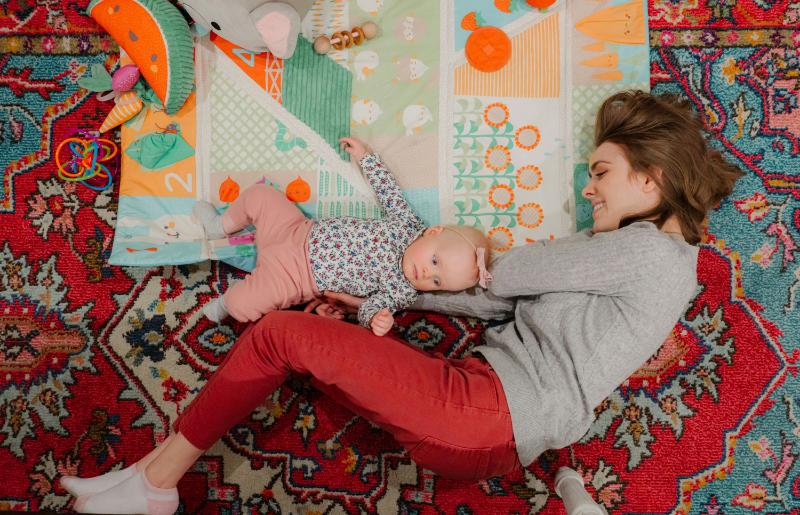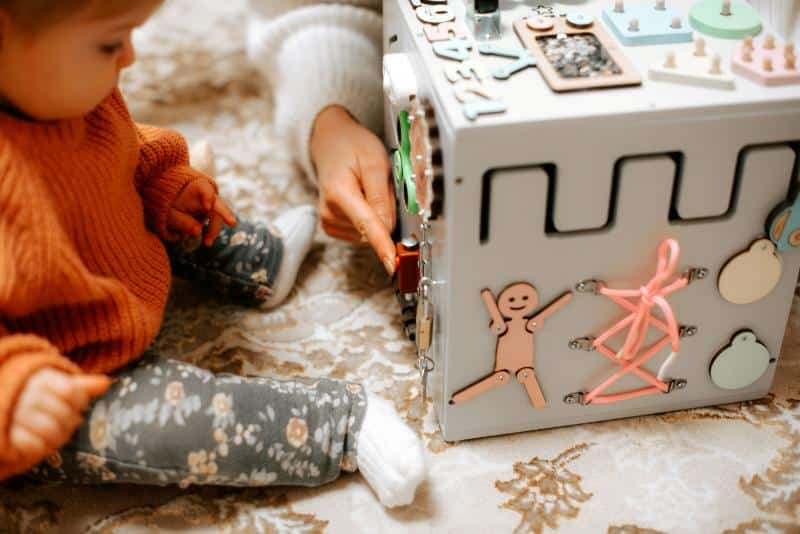As a parent, creating a stimulating and interactive playroom for your baby is an exciting endeavor. A well-designed play space not only entertains but also promotes cognitive, sensory, and motor skill development.
Among the plethora of options available, incorporating interactive elements like a playmat can elevate your baby’s play experience to new heights.
Continue reading to delve into crafting a vibrant and engaging playroom that fosters exploration, learning, and joy.

Understanding the Importance of Interactive Play
Interactive play is vital for a baby’s overall development. It encourages curiosity, enhances sensory perception, improves motor skills, and promotes social interaction. Through engaging activities, babies learn to explore their surroundings, understand cause and effect, and develop essential cognitive abilities. Therefore, creating an interactive playroom is an investment in your baby’s growth and happiness.
Choosing the Right Playmat

Children’s playmats serve as the centerpiece of your baby’s play area, offering a soft, safe, and visually stimulating surface for exploration. When selecting a playmat, consider factors such as size, material, design, and interactivity.
Opt for a spacious playmat that provides ample room for your baby to move, roll, crawl, and play freely. Ensure the material is soft, non-toxic, and easy to clean, prioritizing your baby’s safety and hygiene. Vibrant colors, patterns, and textures can captivate your baby’s attention and stimulate their senses.
Look for playmats equipped with interactive features like crinkly fabrics, squeaky toys, mirrors, and detachable plush toys. These elements encourage tactile exploration, auditory stimulation, and visual engagement, keeping your baby entertained and intrigued for extended periods.
Incorporating Multi-Sensory Toys

Complementing the playmat with a variety of multi-sensory toys enriches your baby’s play experience and encourages holistic development. Choose toys that appeal to different senses, including sight, sound, touch, and even taste for teething babies.
Rattles, soft balls, and textured teething toys enhance tactile exploration and fine motor skills development. Musical toys, chime balls, and interactive books introduce your baby to different sounds, rhythms, and melodies, fostering auditory perception and sensory integration.
Mirrors, colorful mobiles, and activity gyms stimulate visual development and promote self-awareness as babies delight in their reflections and explore the world around them. By incorporating a diverse range of multi-sensory toys, you provide your baby with endless opportunities for discovery, learning, and play.
Creating Interactive Zones
Dividing the playroom into distinct interactive zones encourages exploration and facilitates skill development in various areas. Designate areas for sensory exploration, gross motor activities, imaginative play, and quiet relaxation.
Introduce sensory bins filled with materials like rice, beans, or water beads for tactile exploration and sensory stimulation. Set up a mini obstacle course with soft cushions, tunnels, and climbing mats to encourage gross motor skills development and physical activity.
Create a cozy reading nook with plush pillows, board books, and storytelling props to foster a love for literature and language development. Incorporate role-play stations with pretend play toys like kitchen sets, dolls, and dress-up costumes to ignite your baby’s imagination and creativity.
Encouraging Parent-Child Interaction
Lastly, actively engage with your baby during playtime to strengthen your bond and support their development. Join your baby on the playmat for interactive games, sing-alongs, and sensory activities. Follow your baby’s lead, respond to their cues, and provide encouragement and praise as they explore and learn.
Use playtime as an opportunity for quality bonding moments, sharing laughter, hugs, and affection. Your active involvement not only nurtures your baby’s development but also fosters a strong sense of security, trust, and connection.
Conclusion
In conclusion, designing an interactive playroom for your baby involves thoughtful consideration of their developmental needs and interests. A well-curated space equipped with a playmat, multi-sensory toys, interactive zones, and parental engagement sets the stage for enriching play experiences and holistic growth. Embrace the joy of discovery, imagination, and learning as you embark on this exciting journey with your little one.
